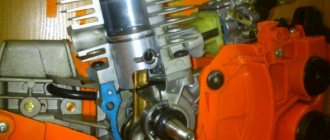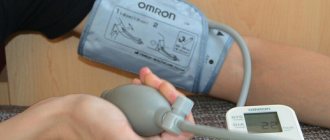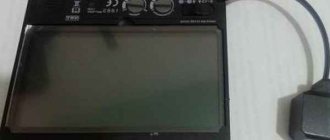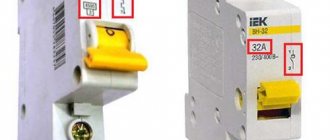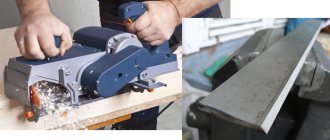Why does welding produce electric current and what needs to be done, how to solve the problem?
The profession of a welder is associated with many dangers, one of which is electric shock. It seems that the “mass” should not give an electric shock, but this is only in textbooks. Sometimes it smells so loud even through gloves that mom don’t worry.
In some cases, this happens due to the fact that the welding machine is not grounded. However, most often the culprit is moisture. And when a welder works without special uniform, the current passes through him, as a result of which the shock is felt.
This often happens due to an insulation breakdown in the welding machine itself. If the device is still under warranty, then it would be best to take it to a service center for diagnostics.
Welding for a teapot or why you need to write to grounding
An electrician once told me that if your ground wire is missing ohms, just pee on it.
A joke is a joke, but the correct truth is hidden in the joke. Wet soil has much higher conductivity than dry soil. And accordingly, grounding will also work much better. While burying the drainage pipe, I suddenly thought, why not make a grounding connection right next to it? Firstly, the soil has been partially excavated and it will be easier to drive in metal corners. Secondly, the metal will most likely be in constantly moist soil and grounding will work better. Yes, corrosion will be better too. But how long will it take for steel 5 millimeters thick to rot? I'd guess at least 20 years. It is enough to measure the grounding resistance once every 5 years and make a decision: do something new or live with it. Let this be an experiment, I thought, and went to the market around the corner.
Typically, grounding corners are 2.5 meters long. But that's usual. As always, I took the most difficult route and bought 4-meter ones! Hurley 4th meter and didn't score
They scored, but on the last blows the fiberglass handle of the sledgehammer could not stand it and broke:
Now I don’t laugh at jokes about a broken sledgehammer. It’s not funny when 5 kilograms of metal can fall on your head like hail.
Well, then all that was left was to scald the three corners with a metal strip, so that all three of them were one. The difficulty was that I: a) have never cooked at all and have no idea how to do it; b) there were no welders in the immediate environment, just like a welding machine. But can difficulties stop me? Horseradish!
Initially, they offered me any welding machine and a mask, but... I am a complete layman in this matter, so I asked for a kit that a complete layman can handle.
The welding inverter turned out to be incredibly small and remote:
I had the impression that the wires to it weigh even more than the inverter itself:
It already came with a regular mask for a welder:
But it contains ordinary dark glass. No adjustments. It will be extremely difficult for a novice welder to work with such a mask. Each time, virtually blindly, you will have to start stitching, risking getting the electrode in the wrong place.
Apparently that’s why I was given the MSKh-13/3 EP mask in the kit:
On the front side of the mask there are two small holes - these are arc sensors. The solar battery is the main power source, which can be backed up by backup batteries if you install them:
On the left is the dimming adjustment. From 9 to 13 DIN:
Inside the mask, adjust the sensitivity (left) and the speed of returning the glass to its original (light) state:
According to the instructions of the mask, you need to charge it for 20-30 minutes before use:
Lying in the sun, charging via a solar battery:
I'll be honest. It was scary to start. It’s completely unclear whether the mask works with adjustments and how to check it?! What adjustments need to be made? What if it is defective or not charged and I get an eye injury? Can an arc welding injury significantly damage my vision? Could I get an electric shock? Even the very thought that a current of 200 Amps was in your hands did not make you happy at all. In short, it was boring, but there was nowhere to retreat. I decided to start working with a mask without adjustments, it has a dull dark glass, it definitely works. This was evident. And my assistant, at a distance of 5 meters, will look through the second mask, with adjustments, and check whether the glass there is darkened when I start welding.
What do you think will happen when a full kettle, almost blindly (and you can’t see anything at all through the black glass) starts welding? Right! A bunch of sparks and eventually the electrode stuck to the metal:
This is called "stuck". Despite the fact that this device has an anti-stick function, apparently my stupidity overcame it.
A few more attempts and it became clear that the prospects of cooking anything today were zero. I started calling all my friends from my contact list in the hope of receiving instructions and guidance over the phone. Can you imagine the picture? Saturday, sunny, early morning, and then someone calls you and starts asking: “dude, what settings should be set on a welder’s mask, what are DINs and how to weld in general so as not to get electrocuted and go blind?” Unfortunately, “calling a friend” did not produce results, because... ALL my contacts turned out to have the same zero knowledge on this issue as I do. The situation is stalemate. What to do?!
Obviously, you need to look for a welder. But where will I find him on Saturday morning?! We decided to just go out into the street and catch all the men and interrogate them. And what do you think, the FIRST man we came across turned out to be a certified gas and electric welder! Our shock and surprise knew no bounds! They dragged him to their site and insistently asked him to show the suckers how to weld
First of all, the welder unscrewed the current regulator almost all the way:
I took a mask with regular glass and started welding. After 5 minutes I sent him away for a “smoke break”, because... At this rate, my prospects of learning to cook would melt away in 5 minutes. I tried it myself, and asked him to comment on what I was doing wrong.
Is there any point in metal things?
If you still doubt the effectiveness of pins and other metal devices in dealing with electric shocks, take a look here!
| Advantages | Flaws |
| Having a safety pin will allow you to reliably protect yourself (and at the same time those who are in close proximity to you) from electrical discharges. | You will have to transfer the “magic” pin from bag to bag, from pocket to pocket. During the first few days, you will most likely constantly lose metal items. |
| The pin is small and therefore invisible. Therefore, you don't have to worry about it ruining your image. | A pin attached to the wrong side of a garment can come undone at the most inopportune moment. |
| The pin will protect you from the evil eye if you believe in it. | A pin won't protect you from the evil eye if you don't believe in it. |
The body of the welding machine generates electric current. What is the reason?
Help solve the problem: the refrigerator began to electrocute. If I connect it through an RCD, the automation knocks it out.
Check the insulation, this happens when the insulation weakens (moisture gets in, cracks, frays, etc.) The RCD, of course, in this case will work to turn off.
Perhaps the cause of your illness is the serviceability of the grounding circuit. All electrical appliances must be grounded, especially in the kitchen and bathroom.
Ground the refrigerator body to the battery for the first time with any copper wire, and look for the reason. Disassemble the socket, maybe the grounding has fallen off, maybe it’s not there at all, usually, unfortunately, this yellow-green wiring is only for beauty, in our apartments, check in the switchboard whether it is connected.
Grounding the refrigerator is of course correct, but after grounding you will soon lose it (the compressor will burn out). It is electrifying, most likely the compressor winding.
Many people have felt a tingling sensation from touching the metal parts of household appliances, be it a refrigerator, washing machine or computer. The nature of this phenomenon is electrical, which is easy to verify by disconnecting the device from the network. There is voltage on the body of the device plugged into the outlet and it is clearly at least 30-40 volts - the lower limit of sensitivity of non-wet skin of the hand. Well, anyone who had the opportunity to measure this voltage with a voltmeter will say more precisely - there are as many as 110 volts of alternating current on the case, which is exactly half of the mains voltage of 220 V. This raises an important question: where and why do these 110 come from when the norm is acceptable for health? 36?
The answer sounds like this: somewhere inside the device, between the two wires coming from the plug, two capacitors are connected in series, one after the other. And the point at which the capacitors are connected to each other is connected to the body of the device, if it (the body) is metal. And also this point.
When using a washing machine, people often forget that equipment is an object of increased danger. So, if the device is connected incorrectly or its internal parts are damaged, a current breakdown may occur, which will lead to a minimum of unpleasant sensations. To protect yourself from such troubles, let’s figure out the reasons and move on to troubleshooting steps.
Causes of current breakdowns on the drum or body of the washing machine
Equipment gives an electric shock if there is a breakdown in its electrical system that allows electricity to leak. There may be several reasons:
Damage to the electrical wiring, for example, crushed the cable somewhere. To identify this reason, it is enough to look at all the wires. If there is damage, then it is unsafe to operate the device. Due to such malfunctions, you can receive a severe electric shock not only when you touch the drum, but also the body. The washing machine is located in a room with high humidity. You need to understand.
Even small electric shocks are very dangerous for humans, so if your washing machine is electrocuted, be sure to solve this problem as soon as possible. The main reasons why equipment starts to “pinch” your fingers when you wash your hands or touch the drum after washing are most often the lack of grounding of the electrical wiring or a malfunction of the machine itself. Next, we will look at the main causes of the malfunction and what to do to eliminate current breakdowns in the bathroom yourself.
No PE wire
The first and most important reason why a washing machine is electrocuted is that the house wiring is not grounded. The fact is that even new equipment is designed for the fact that a small amount of current should flow from the capacitors into the grounding system of the house through the housing. As you understand, if there is no grounding, a slight current charge will accumulate on the body, and when you touch the washing machine you will feel it.
Basic recommendations and safety precautions Step-by-step instructions for connecting a welding machine Connection features depending on the type of device Possible problems after connection
In order for welding work to proceed without unnecessary problems, you need to figure out how to connect the welding machine. Before connecting the unit for welding, it must be placed in a suitable location. It is very important that nothing obstructs the air flow to the openings on the equipment body. Cooling is often intentionally increased. To do this, when connecting the welding machine, install a fan behind it. It is very important to ensure that the unit does not come into contact with dust, as well as wet and aggressive vapors.
How to neutralize static electricity quickly: step-by-step instructions
If you need to get rid of static electricity in minutes, check out these life hacks!
| Steps | Meaning |
| Step #1: Use a pin. | Simply attach a pin to the seam of your pants or to the collar of your shirt. All electrical charges will be concentrated on the metal of the pin. |
| Step #2: Use metal hangers. | To quickly remove the charge from clothing, touch it with a metal hanger. They will immediately collect all the charge on themselves. |
| Step #3: Carry something metal in your pocket. | If you are the “lucky one” who gets electrocuted on a regular basis, put a coin or metal keychain in your pocket. Touch this thing from time to time, it will “ground” you. |
Subscribe to the newsletter
People often have problems when the water in the bathroom generates electric current, or when the entire apartment or office suddenly begins to provoke electric discharges. Many appliances in an apartment can be electrocuted, and if a faucet, stove, water heater, or washing machine electrocutes, not every owner is able to immediately find out why these discharges occur.
Why does the water from the tap produce an electric current?
To establish the cause, you need to turn off the electricity, and if the discharges continue, then try connecting the bathroom and pipes with PVZ wires with a cross-section of 4 mm2, lead it to the stairs and connect it to the panel body. If these measures helped, it means that the shower is electrocuted due to a leak - due to the fact that old wiring or neighbors are draining electricity. Solution - if the problem is in the wiring, then you need to change the wiring and install an RCD (differential relay), but if the problem is not in the wiring, you need to complain to the housing office.
Do you often get electric shocks in the bathroom and kitchen?
Another reason is the potential difference between the washing machine body and the pipes, the bathtub and pipes, or the bathtub and the heated floor. If the washing machine produces an electric shock when touched, this may be due to a dead electrical connection of all elements and a neutral protective conductor.
To correct the situation, you can use a potential equalization box, which contains a busbar connecting the wires. If the case receives an electric current, the wires from the washing machine and all the “iron” that is in the bathroom or kitchen, the “grounding” contacts of the sockets and the protective neutral wire drawn from the panel are connected to this bus.
Since all sockets are connected to two wires - a protective neutral wire from the panel and an equalization wire from the PMC. All equipment is reliably “grounded”, and the problem when the bathroom equipment or the dishwasher is electrocuted is solved.
Other faults
It also often happens that the battery is electrocuted. This may be caused by neighbors using pipes as grounding. In this case, you must send a complaint to the Housing Office.
If electrical appliances malfunction, for example, if a vacuum cleaner is electrocuted, the cause may be in the appliance itself. A similar case is if the headphones receive an electric shock when turned on. In this case, it is best to return the item under warranty.
If the wall is electrocuted, it may be due to damage to the insulation on the phase - this can happen due to a nail or screw screwed into the place where the wire passes.
If the TV and antenna are electrocuted, the problem is most likely grounding. On each floor of the house, distribution boxes must be properly grounded, otherwise “stray points” appear in the TV cables and electromagnetic waves arise.
As for computer equipment, it happens that a laptop or computer system unit receives an electric shock. Since computers operate on switching power supplies that have a high level of noise, line filters are installed to eliminate this. These devices filter out interference onto the body of the equipment, and create increased potential and electric shocks. The way out is to connect the computer through a three-pole socket or ground the case using a wire.
Electric shock from everything
And the last reason is the accumulation of static electricity. If all devices are grounded and the wiring is in good order, the answer to the question of what to do if you are constantly getting electric shock from everything can be a simple wet cleaning - dust and dry air provoke the accumulation of electricity. In addition, you need to avoid wearing woolen and synthetic clothing in the house.
How to deal with static electricity at home?
To deal with static electricity at home, follow these simple tips:
- Install a humidifier.
Most often, static electricity is formed in the winter season, especially in a dry room. The situation is aggravated by radiators, which heat our homes and, at the same time, make the air in it even drier. A home gadget such as an air humidifier will help normalize the level of humidity, and therefore significantly reduce the likelihood of static voltage. You can increase the humidity in the apartment using indoor flowers.
The situation will also improve if you do not immediately turn off the boiled kettle - water particles will get into the air and make it more humid. Tip: you can add your favorite spices, such as cinnamon and cloves, to boiling water. Aroma oils will also come in handy.
- Treat carpets with antistatic spray.
This spray can be easily found at any hardware store. Simply spray the product onto the carpet and let it dry thoroughly. This method will significantly reduce the likelihood of static electricity. An antistatic agent can also be prepared at home.
To do this, add a little fabric softener to a container of water. You need to put a sprayer on top and treat the carpets. By the way, many carpets boast excellent antistatic properties. In this case, you will not need any spray.
- Use antistatic wipes.
This is simply a miracle remedy for car owners. Wipe your car seats with these wipes and you won't be exposed to static tension. By the way, antistatic spray can be used inside a car.
Electrode sticking: causes of the problem
Most often, this problem is encountered by welders who use transformers in their work without the ability to fine-tune the operating mode, or by beginners who use inverters. Expensive models of modern inverter devices have a function that prevents the electrode from sticking. But novice welders often purchase budget models and, due to lack of experience, immediately encounter sticking.
So, why does the electrode stick when welding with an inverter? Below we describe the main reasons.
Reason No. 1: Increased humidity of the electrode
The electrode surface is a special coating that is susceptible to the accumulation of moisture from the environment. If the electrodes are left without packaging, then over time they become damp and lose their quality characteristics, which subsequently leads to sticking.
Reason No. 2: Poor quality of electrodes
First of all, the correct choice of electrode for welding with an inverter is important. Many novice welders save on consumables by buying them from unknown artisanal manufacturers who are unable to confirm the quality of their products. Such electrodes have only one advantage - low price, but otherwise they only complicate the welder’s work. It is low-quality electrodes that can cause them to stick to the metal.
Reason #3: The device is not configured correctly
This is another common cause of electrode sticking. The welder incorrectly estimates the thickness of the parts, selects the wrong electrode diameter and sets excessive or insufficient current power on the inverter.
Reason #4: The surface of the part is not prepared
Some beginners forget to clean the surface of dirt and rust before welding. Because of this, the contact of the electrode with the surface of the part is insufficient and the arc goes out immediately after ignition. In an attempt to correct the situation, the welder strikes the arc again and again, trying to weld the contaminated parts. This causes the electrode tip to stick.
Reason No. 5: The arc is ignited incorrectly
Another common reason is due to the inexperience of the welder. The welder incorrectly ignites the arc using the tapping method and holds the tip of the electrode on the surface to be welded for too long. The metal begins to quickly heat up and literally solder the electrode. Subsequently, the electrodes stick one after another with each new job.
How to prevent electrode sticking
Now that we have found out why the electrode sticks when welding with an inverter, we will talk about simple methods for preventing errors. What can every welder do to prevent the electrode from sticking? The solution is not difficult to find based on the essence of the problem.
Solution #1: Prepare the electrodes and metal
Buy electrodes in sealed packaging from trusted manufacturers. These can be domestic Rotex rods or European ESAB rods. They meet quality standards and should not stick if you set up the device correctly and ignite the arc.
If the electrodes have been left unpacked for more than 8 hours, they need to be dried. This can be done in an electric furnace, taking into account the melting temperature of the electrode. The electrode itself cannot be dried more than three times, otherwise it will lose its properties.
Also, do not forget about preparing the metal. Thoroughly clean the surface of the parts from dirt, rust and paint.
Solution #2: Configure your hardware correctly
By setting the correct settings for the welding inverter, you will not only prevent sticking of the electrode, but also improve the quality of the weld. Below you can find the recommended settings that you should set on your device.
But keep in mind that these are approximate values and you need to rely not only on educational tables, but also gain your own experience. We recommend that all beginners start with a low current setting and increase it gradually. Over time, you will begin to understand what parameters are needed in each individual case.
Solution #3: Learn how to strike the arc correctly
To light an arc, many welders use the method of tapping the tip of the electrode on the metal, but we recommend not tapping, but striking (similar to matches).
First, “idle”, practice moving the end of the electrode smoothly along the surface of the metal. Once you can do this quickly, you can start lighting the arc.
After igniting the arc, it is necessary to ensure that it is of sufficient length. It is important to learn how to do this quickly, otherwise the electrodes will stick and ruin the whole job.
